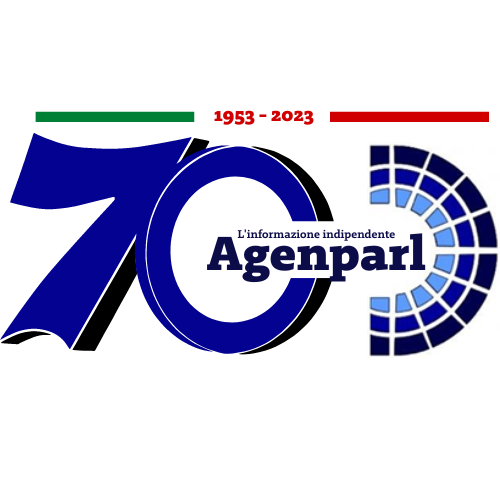 (AGENPARL) - Roma, 15 Agosto 2025
(AGENPARL) - Roma, 15 Agosto 2025(AGENPARL) – Fri 15 August 2025 A weekly compendium of media reports on science and technology achievements
at Lawrence Livermore National Laboratory. Though the Laboratory reviews
items for overall accuracy, the reporting organizations are responsible for
the content in the links below.
LLNL Report, Aug. 15, 2025
Forbes collected thousands of nominations from the general public. Their
journalists analyzed and supplemented those nominations to construct the 50
Over 50 list, which includes LLNL’s Kim Budil.
Leading the Lab and pushing the limits
https://www.forbes.com/50over50/
With age comes wisdom — hard-won resourcefulness to take on new challenges
and solve the world’s thorniest problems. This is the message from the 2025
Class of 50 Over 50, a collection of entrepreneurs, inventors, artists and
wealth-builders whose work touches every corner of America.
From this work emerges a collection of individuals who demonstrate that you
can pivot in your sixth, seventh, eighth or ninth decade; who understand that
a non-linear career can lead to once unimagined impact; and who remind us,
through their achievements, that success and innovation have no age limit.
Kimberly Budil took the reins of one of the nation’s premier science
laboratories — one with a storied history of developing nuclear weapons —
in 2021. Since then, she’s overseen the first lab demonstration of a fusion
ignition and the Lab’s installation of the world’s fastest supercomputer,
El Capitan, a $600 million project that began in 2023. Budil started her
career at the lab in 1987 as a graduate student and had a three-year stint as
vice president for national labs at the University of California Office of
the President, before returning to Livermore, Calif. Now with 9,500
employees, the lab is helping to shape the national program in inertial
fusion energy.
Read More https://www.forbes.com/50over50/
A rendering of Firefly’s Elytra Dawn vehicle utilizing LLNL’s telescope
to perform space domain awareness operations. (Graphic credit: Firefly
Aerospace)
An aggressive approach to telescopes
Lawrence Livermore National Lab enters a different kind of space race with a telescope deal
Lawrence Livermore National Laboratory will have 13 months to develop a
low-orbit telescope that will be part of a space mission expected to launch
in 2027 to help select future moon landing sites, map mineral deposits and
eventually identify deep space threats to Earth.
The LLNL monolithic telescope project, in partnership with the Department of
Defense and the private rocket company Firefly, joins an effort to reignite
the United States’ lunar exploration program — dormant for more than a
generation — and compete in a rapidly growing space-exploration industry.
“The huge demand for space services is a whole new world, even compared to
just 15 years ago,” said Ben Bahney, LLNL’s program lead. “Even for a
non-human space mission, this is a very aggressive schedule… Fundamentally,
the reason why we can build these monolithic telescopes so quickly is because
all of the really hard engineering is done at the manufacturing point of the
glass.”
Read More
Lawrence Livermore National Lab enters a different kind of space race with a telescope deal
Scientists at LLNL have helped develop an advanced, real-time tsunami
forecasting system. (Image: Tzanio Kolev/LLNL)
Supercomputing for tsunami prediction
A Bay Area laboratory has developed technology that can predict tsunamis in
real-time. KTVU got a look at the “world’s fastest supercomputer” on Tuesday,
coming off the heels of a tsunami advisory last month prompted by an
earthquake in Russia.
Many computers operate on just one graphics processing unit, or GPU. This
supercomputer has more than 40,000 GPUs, according to Tzanio Kolev, a
computational mathematician at Lawrence Livermore National Lab.
The Livermore laboratory developed a “digital twin” for predicting tsunamis
in real-time.
“We have a system where you can take data from sensors on the ocean floor and
turn it into a prediction when waves hit the shore,” Kolev said.
The name of the computer is El Capitan. Kolev says this model is much faster
than other forecasts, which could take days.
“This is the best model that we know of for predicting waves,” Kolev said.
“It is called partial differential equation. Lots of computations. They
require a machine called El Capitan.”
The computer is faster than one million smartphones, and it does 1.74
quintillion calculations per second.
Read More
Models developed by a team of authors at LLNL explain the unusual behavior of
plutonium. (Photo: Blaise Douros/LLNL)
Piecing together a plutonium puzzle
https://interestingengineering.com/energy/new-magnetic-model-explains-delta-plutonium-shrinkage
Most materials expand when heated. This happens because the rising
temperature causes atoms to vibrate intensely, move further apart and occupy
more space. Delta-plutonium, however, breaks this ubiquitous rule — in
conditions above room temperature, it unexpectedly shrinks instead of
expanding, a phenomenon that has puzzled scientists for decades.
In a new study published in Reports on Progress in Physics, researchers at
the Lawrence Livermore National Laboratory (LLNL) in California have
developed a detailed model that not only reproduces this counterintuitive
thermal behavior but also explains the underlying physics.
By calculating the material’s free energy — a measure of the useful
energy available within a system — the model provides a deeper
understanding of delta-plutonium’s unique and often unpredictable
properties.
Among all elemental metals, plutonium stands out for the extraordinary
complexity of its electronic structure, shaped by the interplay of
relativity, magnetism and crystal arrangement.
Read More
https://interestingengineering.com/energy/new-magnetic-model-explains-delta-plutonium-shrinkage
The primary mirror surface on a flight-ready 175-millimeter aperture
monolithic telescope. (Photo: Garry McLeod/LLNL)
A space essential: shelf-stable telescopes
https://aviationweek..com/space/budget-policy-regulation/pentagon-pushing-limits-responsive-space-missions
With space as the ultimate high ground, the U.S. is honing its ability to
launch with little warning and adapt quickly to deter threats before they
materialize.
Space telescopes used to be tailor-made and delicate to assemble. LLNL has
refined its optics technology to build shelf-stable telescopes that are
well-suited for responsive space missions. In addition, the facility has
partnered with telescope manufacturer Starris: Optimax Space Systems to
commercialize and scale its patented technology specifically for space domain
awareness missions. LLNL has flown monolith telescope imaging missions on
five different satellites in the past five years, including the 2021
responsive demonstration.
While the Tactically Responsive Space effort seeks to address the modern
space threat environment, the idea of rapidly deployable space assets is not
new. LLNL traces its responsive space mission heritage to the Strategic
Defense Initiative, when it built interceptor vehicles and their sensor
systems under the Brilliant Pebbles program. When NASA’s Clementine mission
launched in 1994 — the first U.S. spacecraft launched to the Moon in more
than 20 years — it carried optical sensors developed for Brilliant Pebbles,
which provided the first complete look at the lunar surface, including the
poles.
Read More
https://aviationweek.com/space/budget-policy-regulation/pentagon-pushing-limits-responsive-space-missions
——————————————————————————
Founded in 1952, Lawrence Livermore National Laboratory https://www.llnl.gov
provides solutions to our nation’s most important national security
challenges through innovative science, engineering and technology. Lawrence
Livermore National Laboratory is managed by Lawrence Livermore National
Security, LLC for the U.S. Department of Energy’s National Nuclear Security
Administration.
Read previous Lab Report articles online https://www.llnl.gov/news/lab-report
Unsubscribe from this newsletter
